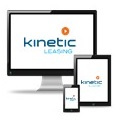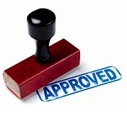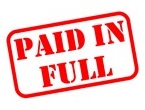Equipment Financing
$5,000–$5,000,000 | Nationwide | Fast Approvals | Flexible Financing
Application-only financing up to $250,000 | Terms up to 72 months
New and used equipment of all types | A–C credits accepted
Online Application
Apply for a lease today. Please contact us if you have any questions.
Submit an Application Online
Fax Instructions
You may also download our finance application (PDF, 34.60 KB), fill it in, and fax it to our offices at (701) 476-0277.
Lease Types
Kinetic Leasing offers a wide variety of leasing products, providing you with the flexibility to meet the needs of your business.
-
Finance or Capital Lease
This lease is referred to as a non-tax lease, whereby, the lessee can acquire use of an asset for most of its useful life. From a financial reporting perspective, this lease has the characteristics of a purchase agreement, with the underlying equipment shown as an asset and the accompanying lease depicted as a liability on the lessee's balance sheet. The lessee then expenses the depreciation and interest associated with the lease on its income statement.
- Up to 100% financing
- Lessor does not select manufacturer or supply equipment
- Various purchase options - commonly $1.00 or 10%–15% of equipment cost
- Similar to purchase agreement - utilizing loan financing
-
True or Tax Lease
A true or tax lease is a transaction which qualifies as a lease under the Internal Revenue Code such that the lessor takes on the risks of ownership and the lessee is allowed to claim the entire amount of the lease rental payment as a tax deduction. Under this type of lease, the lessor claims the tax benefits of ownership including depreciation.
- 100% financing
- Fair market value purchase option
- Low lease rental payments
-
Operating Lease
A short term lease whereby, the lessee can acquire the use of an asset for a fraction of the useful life of the asset. Typically, in this lease type, the lessor has taken a significant residual position in the lease pricing and, as a result, must salvage the equipment for a certain value at the end of the lease term in order to earn its desired rate of return on the transaction. All operating leases are considered tax leases, as a result, the lessor is the owner of the equipment underlying the lease and the lessee is entitled to claim the entire amount of the lease rental payment as a tax deduction.
- Short term
- Typically involves a residual position funded by the lessor.
- Off balance sheet financing for lessee
-
Municipal Lease
This lease is basically a conditional sales contract disguised in the form of a lease which is only available to municipalities. Under this lease type, the interest earnings on the lease are tax-exempt to the lessor and the lender purchasing/discounting the lease. It is noted that a municipal lease would never be considered a true or tax lease, as this lease must be structured with a $1.00 buyout at the end of the base lease term.
- 100% financing
- $1.00 buyout only
- Reserved only for municipalities including but not limited to:
- Cities
- Counties
- Park Districts
- County/City owned hospitals and clinics
- School Districts
- Fire Departments
-
Lease Line of Credit
Pre-approved credit line which allows the lessor to purchase equipment on the lessee’s behalf until such time as all equipment which is intended to be placed on lease has been delivered and installed. This product accommodates equipment installations which occur over an extended period of time, and does not require the lessee to secure interim financing with another lender, or tie up its existing lines of credit.
All transactions are subject to credit approval. Some restrictions may apply.
Our Process
It’s fast. It’s easy. It’s the smart way to get the equipment you need to “move your business forward.”
-

Select Your Equipment
First, you select the equipment—new or used, big or small—from the seller(s) of your choice. You will need to know the type and cost of the equipment before filling out an application.
-

Complete Our Simple Application
Next, you can either submit the finance application online or download the finance application (PDF, 34.60 KB), print it out, fill it in, and fax it to us. It’s free, and you are under no obligation.
-

Speak With a Consultant
A Kinetic Leasing consultant will contact you to discuss your equipment financing options and will answer any questions you may have.
-

Receive Your Credit Approval
For leases of less than $50,000, you should receive approval within 2 business days (in most cases). For amounts greater than $50,000, Kinetic Leasing works with you to gather the documentation needed to establish credit.
-
Send Us the Seller’s Invoice
Fax or e-mail us the seller’s invoice(s) for the equipment you selected in step 1.
-

Sign the Finance Agreement
We’ll send you our finance agreement. Review, sign, and return it.
-

Receive Your Equipment
Upon acceptance of the financing agreement, we will issue payment to the vendor. They’ll ship the equipment to you, or you can pick it up. Once the equipment is in your possession, your contract with Kinetic Leasing begins.
-
Pay Your Invoices
Invoices for future finance payments will be forwarded to you from our office approximately 20 days prior to the due date, based on your scheduled payment plan. If you sign up for our convenient automatic payment option, we will send you a statement showing that each payment was received.
-

Pay Off Your Contract
Once your payment obligations are satisfied, Kinetic Leasing will return the original finance documents—stamped paid—along with a bill of sale for the equipment and applicable titles that transfer ownership to you.
Kinetic Leasing is committed to making the process as fast and easy as possible.
Benefits
Leasing is used by smart companies because it offers so many compelling benefits.
-
Economic Benefits
- Diversification of Financing Sources. Diversification of financing sources makes good sense, whether credit is in short supply or not.
- Additional Source of Debt Financing. A business using lease financing for its asset needs can keep its primary credit lines available for other financing needs during the year.
- Flexibility. Leasing gives a business the opportunity to make the most of lease structuring variables such as number of payments, amount of the advance payment, purchase options, interim rent, etc.
-
Income Tax Benefits
- Reciprocity of Tax Benefits. When leases qualify as tax leases per the IRS, the lessor passes on tax savings to the lessee.
- Deductibility of Lease Rental Payments. Lease payments in a tax lease are fully deductible for federal income tax purposes.
-
Ownership Benefits
- Reduced Risk of Ownership. Leased equipment can be used for most of its economic life without the user having the burdens of ownership.
- Less Restrictive Form of Financing. Lease agreements rarely contain restrictive covenants, thereby offering greater freedom and flexibility than a loan.
- Potential for Ownership at Lease End. The lessee generally has the ability to purchase the equipment at the end of the lease term.
-
Technology Benefits
- Hedge against outdated or obsolete equipment. Leasing shifts the risk of owning outdated equipment from the lessee to the lessor.
- Takeout, Rollovers, and Upgrades. These common lease options give the lessee flexibility during the lease term should the leased equipment become obsolete prior to the termination of the lease.
- Increased Affordability to Company. The acquisition of assets through leasing, as opposed to purchasing, becomes even more desirable as the cost of the equipment rises. There are a number of reasons for this.
- Circumvention of Capital Budget Constraints. Many profitable companies choose to lease for one very real reason—to circumvent capital budget constraints.
In summary, the main reason why equipment leasing continues to grow is that leasing meets the needs of so many types and sizes of businesses. Mature profitable companies lease equipment to keep bank credit lines open for other purposes. Young, start-up companies lease to conserve cash, while businesses requiring state-of-the-art technology lease equipment to avoid outdated technologies and to preserve the ability to upgrade.
FAQ
If you have questions that aren’t answered below, please contact us.
Q: What Is Tax-Exempt Municipal Leasing?
A: Tax-exempt municipal leasing allows municipalities to acquire needed equipment without depleting their operating budgets, and it:
- Is used to finance essential use equipment or projects (such as buildings, water treatment facilities, leasehold improvements, etc.)
- Is not a rental agreement, as the title to the equipment is turned over to the municipality for $1.00 at the end of the lease
- Is considered a current operating expense
- Offers the option of purchasing the equipment outright, at any time, for a predetermined purchase price
- Is an avenue to ownership that does not create a debt obligation
- Is a renewable contract, subject to annual appropriation of funds
- Does not affect the municipalities’ long term debt
The normal duration of a tax-exempt municipal lease is generally for a period of less than the asset’s expected useful life (typically 3–7 years). However, leases on buildings and other assets with longer useful lives can go as long as 10–20 years.
Municipal lease transactions range from $15,000 to several millions of dollars. Payments can be structured to meet the lessee’s cash flow requirements, payable on a monthly basis. The payments include the cost of the equipment and all financing charges. Interest rates are generally fixed for the term of the lease. In some cases, a repricing window will be documented into the lease to allow for a repricing every 3, 5, or 7 years for longer term lease contracts.